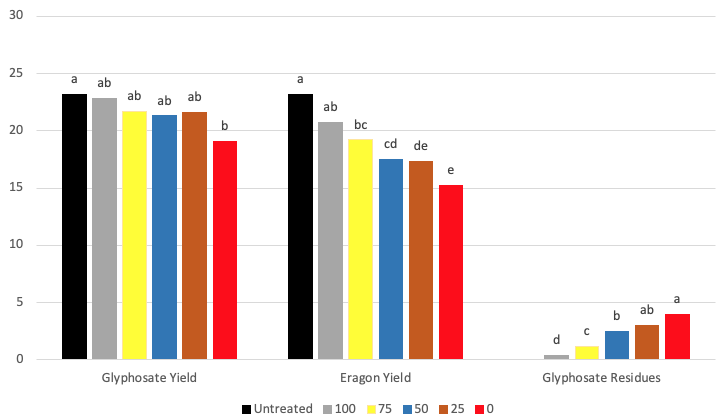Bean growers use desiccant herbicides to manage variable crop maturity and weed escapes. If herbicides are applied too early, seed may carry herbicide residues, which can impact export markets. The purpose of this study was to measure the impact of herbicide timing on seed residues in Canada.
A total of 11 field studies were done at Lethbridge AB, Carmen MB and Exeter ON in 2010-2012. Eragon (saflufenacil) was tested alone, and in combination with glyphosate, at 0, 25, 50, 75 and 100% crop pod maturity. Leaf, stem and pod desiccation, herbicide residue, seed weight and crop yield were measured.

Bars within a group with the same letter are not significantly different (P<0.05).
Glyphosate reduced crop yield by 16%, at the 0% pod maturity timing, compared to the 100% timing. Crop yield losses as high as 32% were measured as the timing of the herbicide Eragon decreased towards the 0% timing. Glyphosate residues remained below the MRL of 2.0 ppm at the 100 and 75% timings. Residues were above the MRL at 50, 25 and 0% timing, gradually increasing to 4.0 ppm at the 0% timing. Residues were slightly lower for the tank mix of Eragon + glyphosate (data not shown). Residues of the herbicide Eragon never reached the MRL of 0.01 ppm.
Originally published in Canadian Journal of Plant Science 2015. Volume 95. Pages 1-7. Updated in July 2020 for drybeanagronomy.ca.
